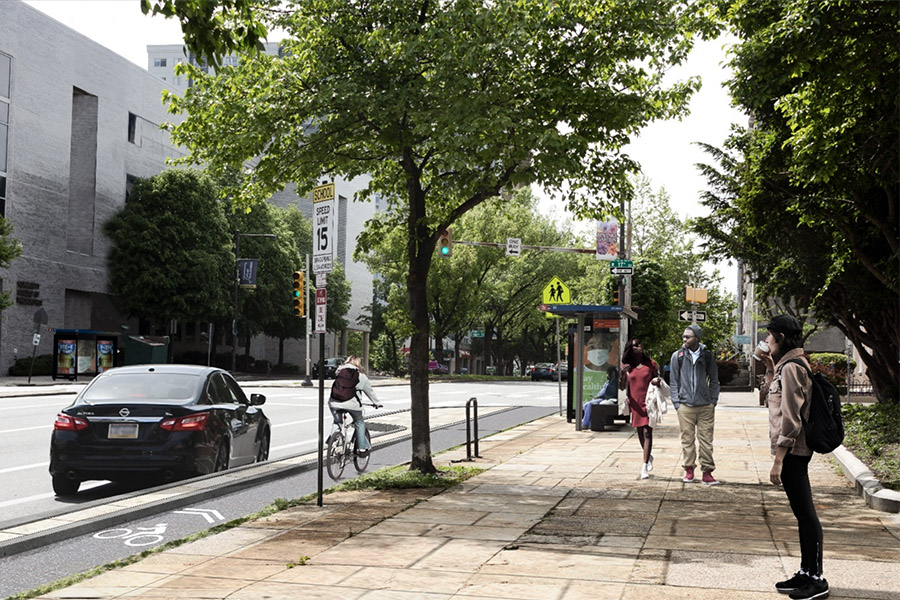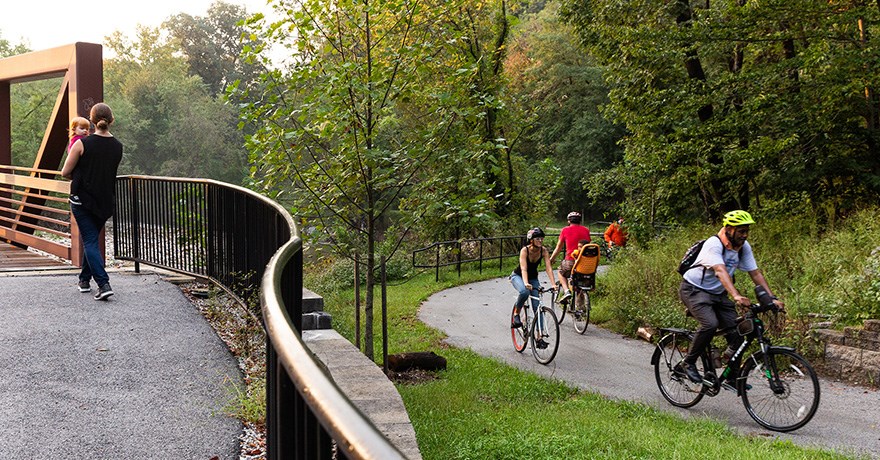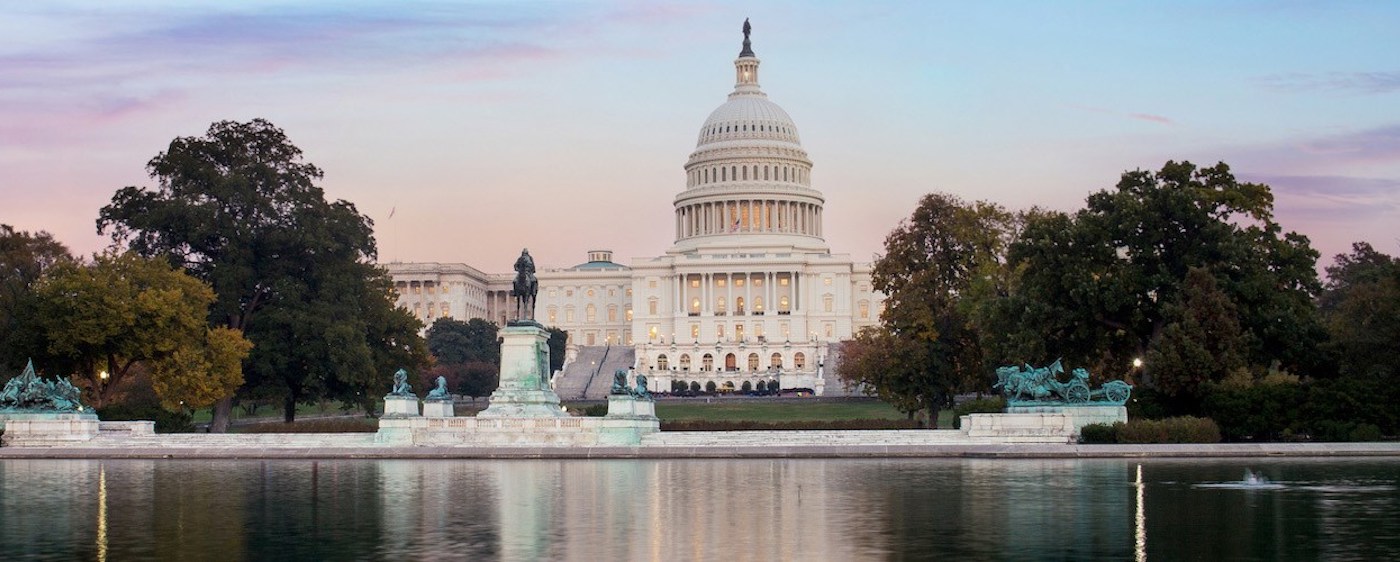Carbon Reduction Program
Photo courtesy Getty Images
The Bipartisan Infrastructure Law (Public Law 117-58; “BIL”), signed into law by President Biden on Nov. 15, 2021, established the Carbon Reduction Program (CRP). This program provides $6.4 billion over the next five years to states to:
- In consultation with any Metropolitan Planning Organization (MPO) in their state, develop carbon reduction strategies designed to reduce transportation emissions and identify projects and strategies that support these efforts. While states have two years to develop their strategies, they are encouraged to obligate available CRP funding to projects that support the implementation of their strategies; and
- Fund projects designed to reduce carbon dioxide (CO2) emissions from on-road highway sources.
The CRP will help fund a wide range of projects designed to reduce transportation emissions from on-road highway sources. Included as an eligible use of funds are Transportation Alternative-eligible projects, including the construction, planning, and design of on- and off- road trail facilities for pedestrians, bicyclists, and other nonmotorized forms of transportation—a move that recognizes the role that trails and active transportation play in addressing and mitigating the climate impacts of the transportation sector, the largest carbon emitting sector in the U.S. Any other Surface Transportation Block Grant Program (STBG)-eligible projects are also eligible for CRP funding if a state can demonstrate to the Secretary of Transportation that the project reduces transportation emissions.
Other projects not listed as an eligibility may still be eligible for CRP funds if they can demonstrate a reduction in transportation emissions consistent with the CRP’s goals. These include efforts that support mode shift and the increased safety and separation of motor vehicles from vulnerable road users and micromobility and electric bike projects. Projects that add lane capacity for single occupant vehicles use will not be eligible without demonstrating emissions reductions over the project’s lifecycle.
For more information and technical assistance for this program, contact your local FHWA field office and visit the FHWA Bipartisan Infrastructure Law website for more technical assistance and local support information.


Quick Facts:
- Type: Formula funding
- Administered By: The U.S. Department of Transportation (USDOT)’s Federal Highway Administration (FHWA) allocates funds to each state through formula funding. 65% of funds are then suballocated to localities based on population size.
- Year Created: Established by the signing of the Bipartisan Infrastructure Law (BIL) in 2021
- Purpose [for blurb on landing page]: To provide states with flexible funds aimed at reducing transportation emissions through the 1) development of state carbon reduction strategies that must be updated at least once every four years, and 2) by funding projects designed to reduce transportation emissions.
- Federal share: For most active transportation projects, the federal share is 80%.
- Also Known As: CRP
Resources
USDOT FHWA Carbon Reduction Program Factsheet
5-year (2022-2026) Carbon Reduction Program’s Estimated Funding by State

